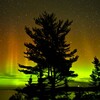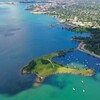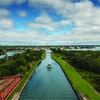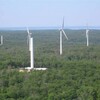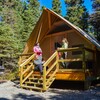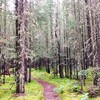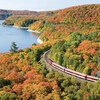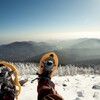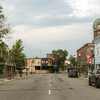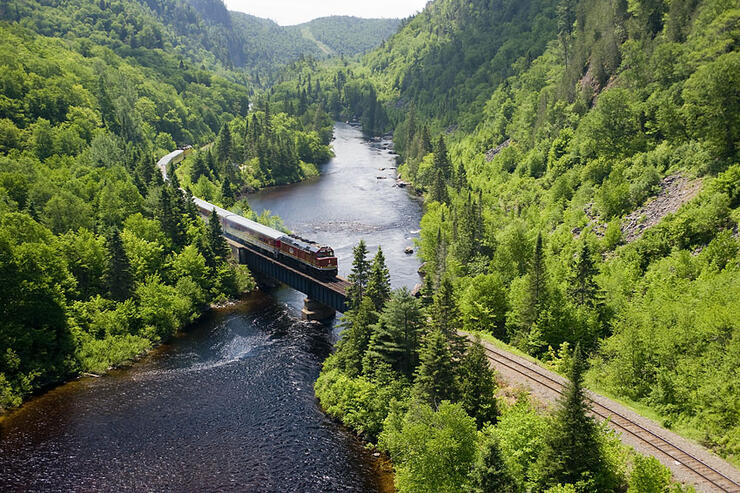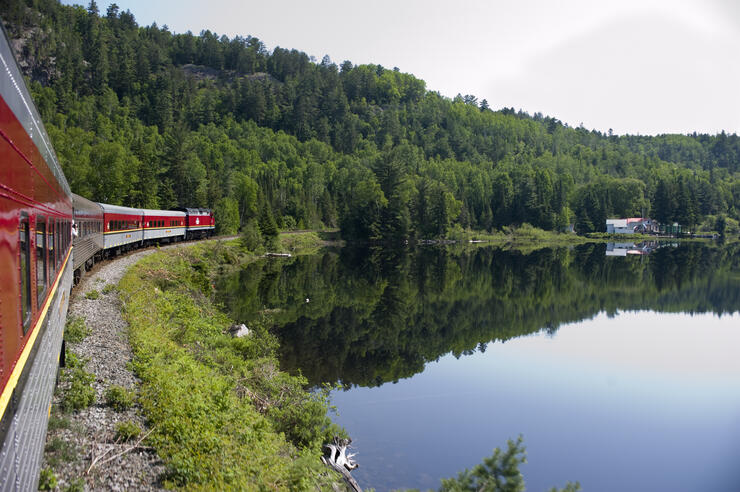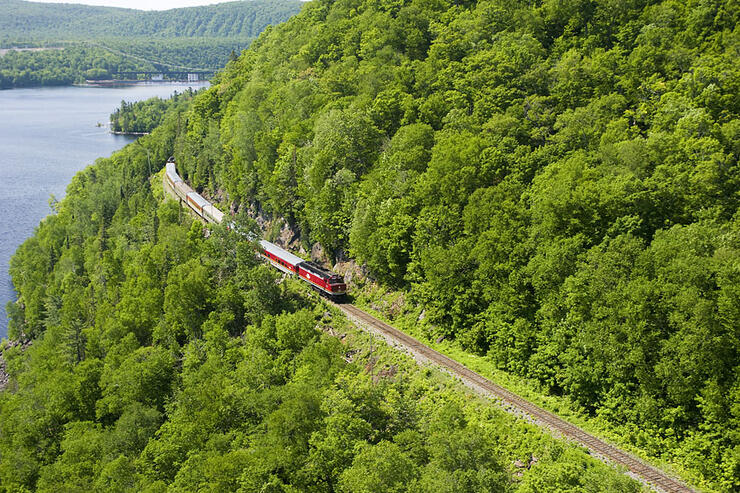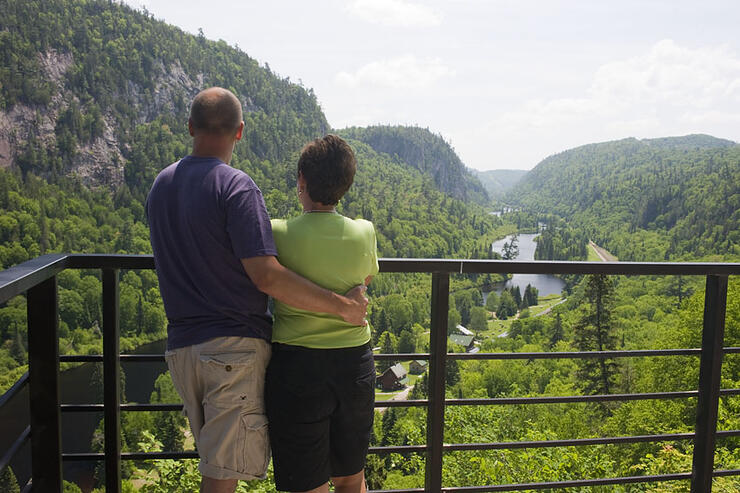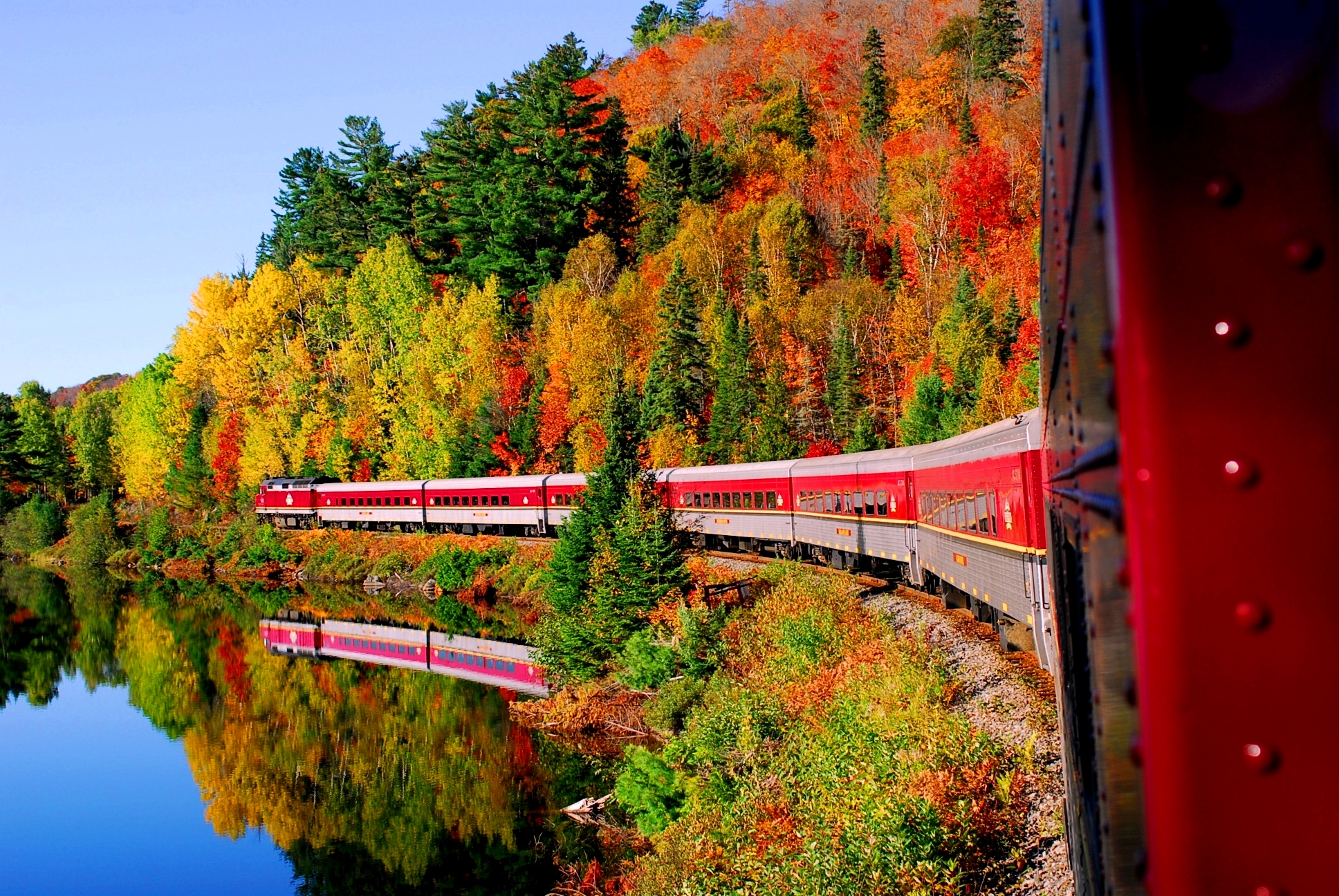
All aboard for a stunning Canadian natural wonder
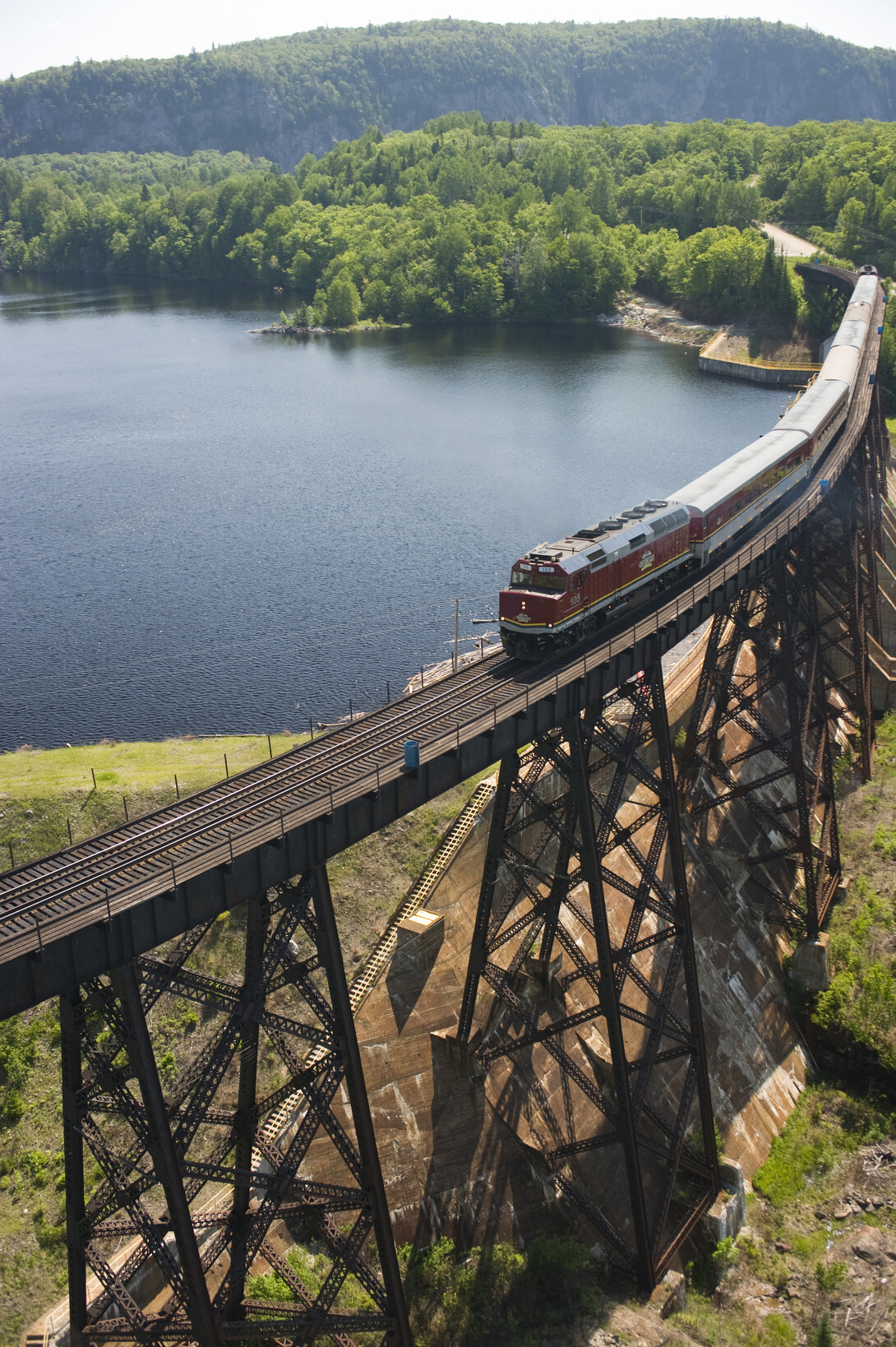
You may have seen Niagara Falls, the Northern Lights or the Rockies. But to truly check off your bucket list of Canadian natural wonders, you'll have to visit Northern Ontario—and this wonder is one that can only be seen by train.
Travel by car has its advantages: it’s fast, private and runs on your personal schedule. From a car, the landscape races past in a blur—and most of the time that doesn’t matter, as highways are designed for efficiency and few offer much to look at. Accustomed to highway driving, we’ve become used to ignoring the view as we travel—we're likely to forget how much pleasure there is in taking in a splendid landscape in slower motion, and closer range. That is the magic of the train.
The Agawa Canyon Tour Train isn’t a passenger train in the average transportation sense—it exists today with the sole goal of providing passengers a genuinely memorable ride. It brings people through some of the finest landscapes in Canada, and perhaps the world. That itself is special: as passenger trains are less and less a feature of our day-to-day transportation reality, a train dedicated to the celebration of beauty is a rare thing at this point in the 21st century. But with beauty like the Agawa Canyon, it isn't hard to see why this train line has run through the region for more than 100 years and shows no signs of stopping.
The Agawa Canyon Train is often—with good reason—thought of as “the Group of Seven Train.”
“Several members of Canada's Group of Seven painted in the Algoma region between 1918 and 1923,” says Jacques Luce, Manager of Passenger Operations for CN Railway, which operates the Agawa Canyon Tour Train. “To gain access to this remote region they rented a boxcar from the railway. The car was outfitted like a cabin and was shunted to sidings near choice painting locations. From these locations, they would set out on foot or canoe to capture this untamed area on canvas. Their paintings brought this vast, rugged and beautiful part of the country to fellow Canadians and the world.
Each year there is a steady stream of visitors to Sault Ste. Marie and the area, there to see the many Group of Seven sites, as well as local attractions such as the Canadian Bushplane Heritage Centre and its collection of historical aircraft and flight simulators, the Art Gallery of Algoma with its collection of local, national, and international works, and the nearby Agawa Rock Pictographs, an amazing site of ancient Indigenous art. But the Agawa Canyon Tour Train is the region's must-see attraction.
The word “rugged” is often used to describe the 184 km of terrain through which the train passes on its 10-hour journey—and that makes perfect sense. The Algoma District, particularly the Agawa Canyon, are located near the centre of the Canadian Shield—the ancient and unbroken landscape constituting the earth’s crust. The region is sparsely populated by human beings and there are few roads, meaning the train is not just the best but one of the only ways to experience it. That is not to suggest suggest that the Algoma District is barren: wildlife is plentiful—and often visible, and rather than barren rockiness, the forests of the region are abundantly populated with white and yellow birch, sugar maple, hop-hornbeam, and a variety of evergreen trees.
The Algoma Central Railway has a storied history of its own. It was chartered in 1899 by Francis Clergue, an American businessman who was key in building Sault Ste. Marie's industry, and developed over the course of the subsequent 15 years to run from Sault Ste. Marie to Hearst, Ontario. The railway necessitated the construction of massive trestles to ease the crossing of the Montreal River and Bellevue Valley, which offered some of the best views of nature available anywhere in Canada—but for the next 50 years the Algoma Central Railway played an industrial role, hauling lumber and ore from the region.
In the 1960s, the railway's operators realized its trains offered unrivalled access to countryside inaccessible through any other means—and that countryside had, thanks to the Group of Seven, become synonymous with the Canadian wilderness in our national imagination. Soon the Algoma Central was running the longest passenger trains in North America for the purpose of showing off the region’s scenery.
Today, the train has been completely refurbished and features GPS-triggered tour narration in five languages, large windows, video-cameras mounted on the locomotive, and monitors in the coaches showing the engineers’ eye view of the track ahead.
As much has changed in and outside of the Algoma District over the last hundred years, the scenery has not. It’s every bit as striking as it was when the Group of Seven were making trips there to paint it. And this train offers an opportunity to take it in at a leisurely speed with as clear a view is possible.
Because the trip lasts 10 hours, riders experience an enormous variety of scenery. Luce notes they’re carried “over towering trestles, alongside pristine northern lakes and rivers, and through the awesome granite rock formations and vast mixed forests of the Canadian Shield.”
The adventure—and views—continue from there: “the train will begin its descent into the canyon, and as the rail line hugs the top of the canyon wall; you will travel down 500 feet over the next 10 miles to the floor of the Agawa Canyon, created over 1.2 billion years ago by faulting and widened and reshaped by the last ice-age that retreated 10,000 years ago,” he goes on to explain.
In summer and fall, the train stops for 90 minutes in the Agawa Canyon Wilderness Park, which is accessible only by train or by foot. Riders have their choice of trails to the park’s most scenic spots, including four waterfalls and its famous lookout. There are picnic tables by the Agawa River for dining al fresco. As riders are off exploring the park, their seats are turned around so they can enjoy the ride back facing forward and seeing what’s coming up next.
Even if there were roads from Sault Ste. Marie to the Agawa Canyon Wilderness Park, driving there would mean sacrificing the view to speed and the distractions of the car experience. The Algoma District just makes the most sense on a train, at the right speed to allow riders to enjoy the singular natural beauty of the region. It inspired the Group of Seven a century ago, and it can inspire you today.
Recommended Articles

Happy 150th Birthday Canada
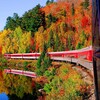
A Spectacular Fall Colour Tour

The Winter Bucket List Just for Kids

No need to leave your furry friend at home
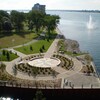
A Personalized Getaway

Why the Fall Is a Great Time to Visit Sault Ste. Marie

Ice fishing in the Sault Ste-Marie area

Fishing with Carter Dorscht

Storytelling in Bone and Stone: New Masterpieces by Abraham Anghik Ruben

Travelling solo?

Girls just want to have fun!

Vision, Hard Work, and a Little Thyme

The Best Cosy Soo Cafes
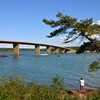
St. Joseph's Island Tour

48 Photos That Prove Sault Ste. Marie's Art, Culture and Entertainment World Is Worth A Trip
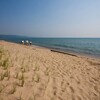
Get sandy this summer in and around the Soo
7 great bird-watching spots in Sault Ste. Marie

hear the thunder, feel the rumble
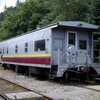
The Ultimate Caboose Camping Experience



